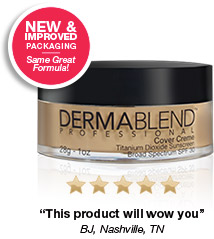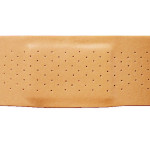

Discussion 58: Approaching the coming job search
Here is a list of some very powerful ways of approaching the coming job search.
By Yolanda Salazar 10 Steps To A Job Search Workbook
1. Be curious.
Be curious about what you may create for yourself. Look for those jobs that you may not have ever done, but you feel that maybe, if given a chance, you could learn to do. It might be something that you really enjoy doing and never thought about getting paid for doing it.
2. Be confident. Believe in yourself! Be confident in what you have to offer your future employer.
3. Be gutsy. Develop a “It doesn’t hurt to ask” attitude and approach your job search with guts.
4. Be prepared. It is very important to express exactly what you are trying to say and do, both orally and in writing.
5. Be and feel challenged. Let challenge become your guide and discover how to come up with more and more leads.
6. Be connected. This is so very important. Connect to as many people as you can. Connect to agencies and resources wherever they may be available. This can help tremendously.
7. Be frugal with your time. Your job search is an urgent matter. There is no time to waste, so use your time wisely.
8. Be fearless. There is nothing you can’t do. Do not be afraid to talk to people. Ask them questions about who they know, about what they do in their jobs and especially about any job leads they might be able to give you.
9. Be friendly. You can get more with honey than you can with vinegar! Be friendly in all your transactions with everyone you meet and connect with along your route to a job.
10. Be easygoing. Relax, take it easy and enjoy the adventure of finding a job.
11. Be creative. Use your own imagination to create your own winning formula.
12. Be active. Try to keep yourself active, regular and consistent in your everyday efforts.
13. Be diligent. Make sure you follow-up every tip, lead or possibility that comes your way. Don’t let a miracle slip through your fingers.
14. Be proactive. Make things happen for you. Keep initiating the action.
15. Be positive. Go for what you want, what you really, really want and play big.
16. Be promotable. Create great stuff to promote yourself. Show all that you can and how well you do it.
17. Be sellable. Sell yourself like a champ! Be enrolling and likable. This is where you brag on yourself. Don’t hold anything back.
18. Be successful.
Discussion 56: Age Proof your Resume
8 Ways to Age Proof Your Resume:
Preparing a resume that emphasizes your value is a good first step to preparing for your job search. Here are eight ways to age-proof your resume:
1. Don’t provide your complete work history: This is the number one mistake job seekers make. If it’s before 1990, employers probably don’t care. Hiring managers are most interested in what you did recently, so concentrate on your recent career. If you feel compelled to delve into earlier experiences, create a section called “Early Career” and provide just the highlights and no dates.
2. Watch your language: Avoid age-revealing statements such as “35 years of experience” or age-defining clichés such as “seasoned professional.”
3. Stick to a “combination” resume style, leading with a strong “Career Summary” section: You may have been advised to mask your years of experience with a functional resume format. But employers do not like to see functional resumes because they are often used by candidates who are trying to hide something. You don’t want employers reading your resume and searching for a possible problem. Unless your work history is extremely spotty or you are completely changing careers, stick to a chronological format.
4. Show that you’re current with technology and industry trends: Are you proficient with Wang or an expert at BASIC programming? While these programs were once cutting-edge, they have been replaced with new technology. Show that you’ve kept up with the times by removing antiquated equipment, programs, and tools, and highlight your knowledge of modern technology.
5. Consider dropping dates of education: This is a tough call, because hiring managers who want to know a person’s age will go right to the “Education” section and do the math. If your education occurred in the 1970s or earlier, it might be in your best interest to eliminate graduation dates.
6. Keep your school names updated: If you graduated from a school that has since changed its name, include the new name. If you are concerned about discrepancies in case an employer asks to see a transcript, write the former name of the school in parentheses.
7. Show that you’ve been continually learning or taking on new roles: The key is to demonstrate that your skills are fresh and in demand. It is important that you show that you are flexible and willing to adapt to organizational changes.
8. Quantify and expand on your achievements: As a professional with a long work history, this is your chance to accentuate the positive. You have what younger workers may lack — years of practical experience. Provide examples of how your performance contributed to your employers’ goals, mission, and bottom-line results.
Click Here to READ the FULL ARTICLE
Was this article useful? If so, subscribe to our newsletter to read more!
Source:Resume Power.com
_________________________
Discussion 55 Changes To Job Club And Applicant Roundup
The monthly Applicant Roundup for August is being cancelled. We are preparing to put together a Job Event and we felt our time would be better spent in doing this.
We would like to ask everyone to ensure they have an updated resume and make sure your interviewing techniques are sharp.
Please let us know what type of positions you are looking for as we will start recruiting employers within the next few weeks.
FYI, we will be changing our Job Club Discussion to Mondays instead of Wednesdays beginning this next Monday, August 12th. We feel that our Discussion would be better accepted at the beginning of the week, rather than “smack dab” in the middle of the week. Hope this works for everyone!!
See you on Monday!

Tattoos And You
There are many reasons people get tattoos. This article is not an attempt to tell you if you should or should not get a tattoo. This article is not an admonishment of getting one, or whether it was right or wrong for you to get one. This article is assuming that we are past that point. You got one, and now, you need to know how to cover it up. Regardless of how you feel about tattoos, their use, or decoration of your feelings, sometimes they need to be hidden. Getting a tattoo is a deeply personal choice. However, keep in mind that for some, getting tattoos was not a choice, it was a way for survival. Some live in a conservative area and will, from time to time, need to dress up, or hide your ink. Below are some suggestions to help you out!
First off, I will give you a brief explanation of what a tattoo is. A tattoo is a type of body modification where indelible ink is put into the dermis layer of the skin to change the pigment. There are normally two ways to hide a tattoo when you are working. One is with clothing and the other is with makeup. Both ways have their pros and cons, so we’ll go through both. Then, there are some non-traditional ways that we will touch on briefly.
Clothing:
Ways to hide tattoos with clothing include, but are not limited to, wearing long sleeves over full arm tattoos, wearing slacks to hide leg tattoos, or using an extra shirt to hide tattoos under sheer tops. You can also wear long skirts that hide tattoos around your legs or upper thighs. Maybe you could wear large watches or bracelets to cover wrist tattoos.
Pros:
- You can hide the tattoos without the process being messy.
- Inexpensive, chances are you already own enough clothes to successfully cover them.
- Convenient, it doesn’t take a lot of time to put on an extra shirt.
Cons:
- It’s going to be warm and summer comes pretty fast when you’re wearing extra layers of clothing.
- It may feel restricting and you may have a job where you need to move around freely.
- Jewelry and such may not be allowed, depending on what type of job you have.
Make-Up:
 Make-up can cover a lot of things, i.e., acne, scars from burns, and even facial tattoos. You can go to a department store and buy make-up, such as Derma Blend, that was created specifically for covering tattoos on your face and other body parts. Or, you can go to your local drug store and purchase a few products in your shade and follow these steps. (Please make sure that your tattoo is fully healed before doing this!)
Make-up can cover a lot of things, i.e., acne, scars from burns, and even facial tattoos. You can go to a department store and buy make-up, such as Derma Blend, that was created specifically for covering tattoos on your face and other body parts. Or, you can go to your local drug store and purchase a few products in your shade and follow these steps. (Please make sure that your tattoo is fully healed before doing this!)
- Using a concealer that is a few shades lighter than your skin tone, cover the tattoo completely. Allow the concealer to dry.
- Using a foundation that matches your skin tone perfectly, apply a few coats of it until you have covered the light concealer. Allow the foundation to dry after each application.
- Finish by applying a matte powder over the top of the foundation. Make sure that the powder matches your skin tone as well.
- Allow the area to dry before touching it or attempting to cover it with clothing.
Pros:
- It’s cooler than wearing a lot of clothing.
- It’s non-restrictive, the make-up rests on your skin so there is nothing to snag or bunch up.
- There aren’t many work restrictions on wearing make-up in the workplace.
- If done properly, it’s unnoticeable by most.
Cons:
- You have to make sure that you are not allergic to certain types of make-up or have sensitive skin, so be careful.
- It’s not convenient. To do the job correctly, take a few minutes until you get used to doing it in the morning.
- For those not used to wearing make-up, you will know you’re wearing make-up, so it will feel odd at first.
- It may stain your clothing, if you do not let it dry properly.
- Sweating is a fact of life. Try to get make-up that is waterproof.
Now, there are some non-traditional ways of covering up tattoos that we haven’t mentioned yet that may also help you when covering your tattoo.
 Band-Aids: Cloth, adhesive, or patches. All of these come in a variety of shapes and sizes or can be cut to the size you need. They also come in flesh tones that can blend in with your skin.
Band-Aids: Cloth, adhesive, or patches. All of these come in a variety of shapes and sizes or can be cut to the size you need. They also come in flesh tones that can blend in with your skin.
Arm Sleeves: You can by sleeves specifically made to look like skin that will cover up your tattoos.
Spirit Gum and Liquid Latex: This could probably go into the make-up category, but I put it here due to its availability in certain areas. The same items you pick up during Halloween to achieve those monster effects can also be used to cover up your tattoo. It’s also cheaper to buy around the holidays. So, if you get the chance, it might not hurt to stock up on theatrical make-up during that time of the year. It’s better then regular drugstore make-up, but much less expensive than the stuff you will buy at a department store. It can also be shaded to match your skin and it helps with those tattoos that are slightly raised off your skin.
Pros:
These options aren’t hot and can be used all year long.
There is nothing that will feel restricting when you wear them.
Most workplaces have no problems with any of these methods.
Cons:
Availability: in some cases, you may have to wait for a yearly event or order online, if you don’t live in a major city.
Expense: If you put a name on something, it can raise the price tag. Shop around, if you feel the need.
They may take some getting used to when you first start wearing them.
 Regardless of how or why your got your tattoo, we hope we have given you some options that will help you cover them, when it is necessary. △
Regardless of how or why your got your tattoo, we hope we have given you some options that will help you cover them, when it is necessary. △

